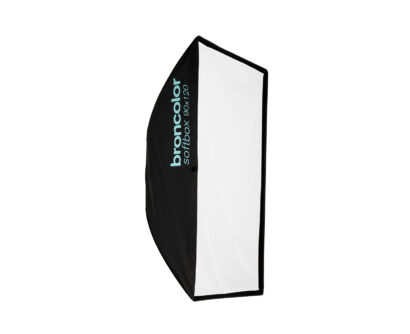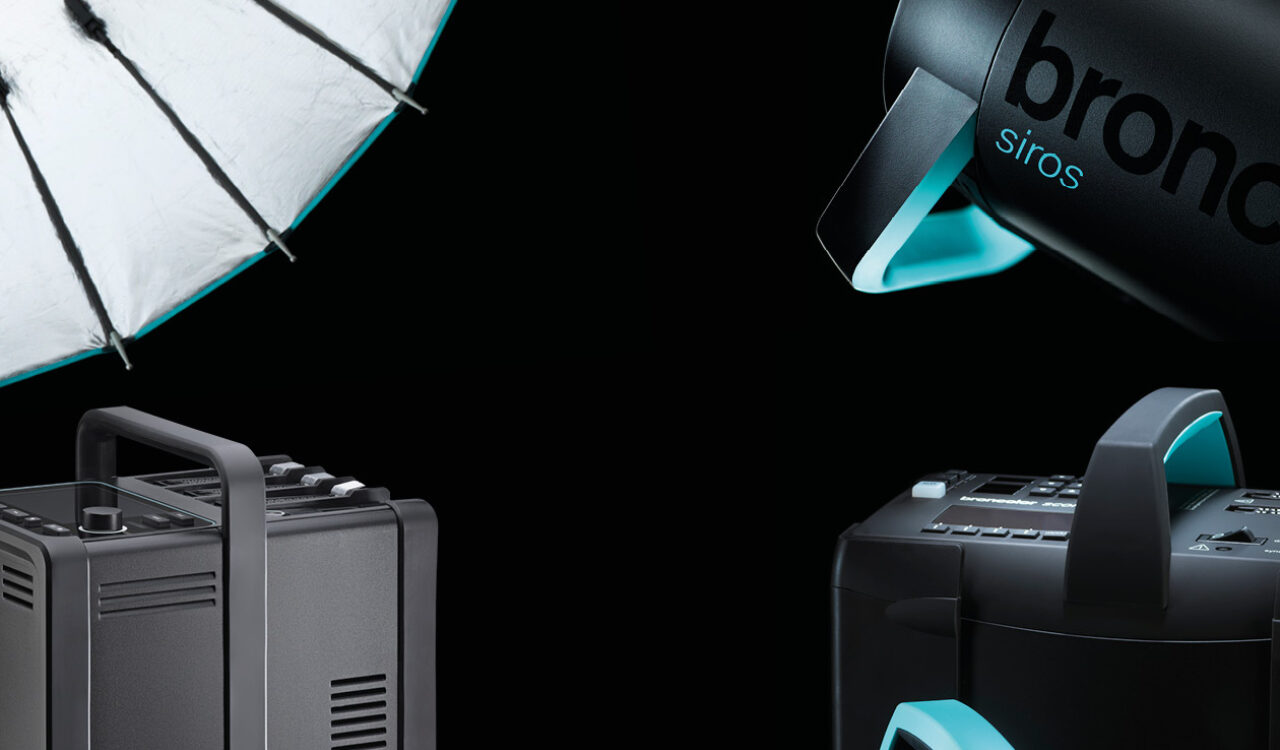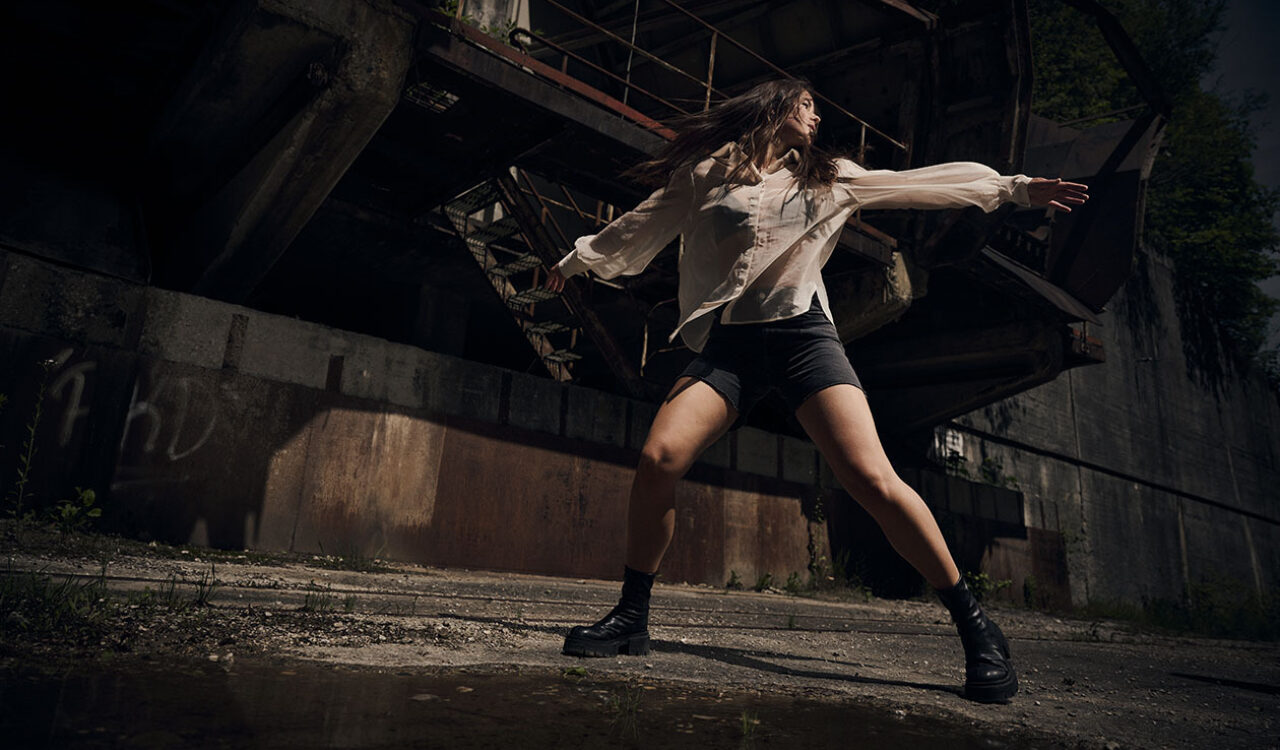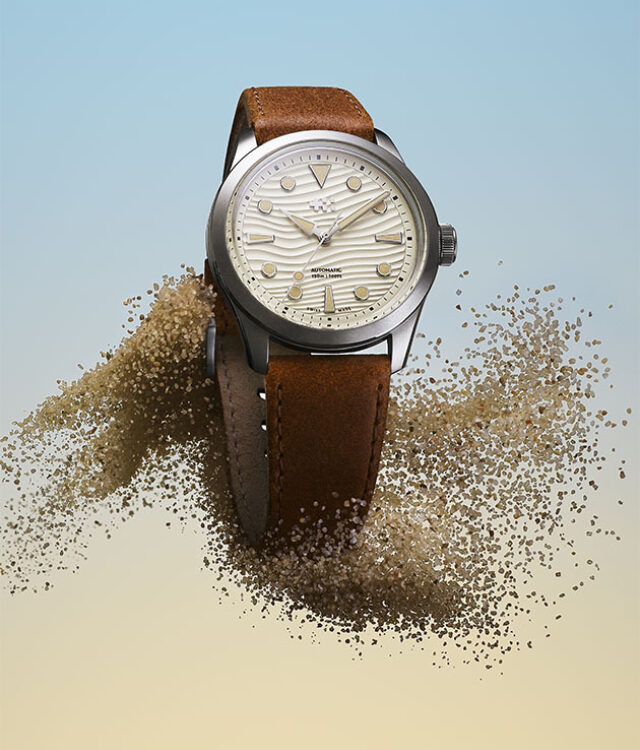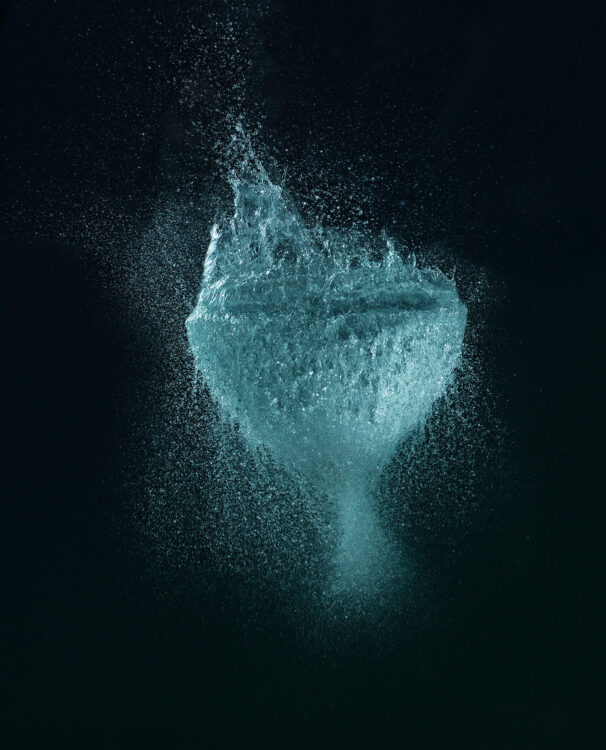
Today’s blog contribution is about explosions and how to catch or freeze these in a photograph. When I used to work as a photographer for broncolor, I had the opportunity to experience a great deal and to develop workshop examples. One of these self-developed examples, and actually one of my favourites, is the Watersplash. Participants in Asia will know of this example, and I would like to take this opportunity to say hello to everyone who took part.
I had always envisaged making a series of these explosion photographs. I had the RGB colour model in mind. I already had blue for this, i.e. the water. I then thought that I could realise the green with powder – the principle with this is the same.
If you want to freeze fast movements, it is important to have a short exposure time. In the studio, it is known that the shutter speed cannot be changed very much, so how do I do this? Right, broncolor is known for the patented cut-off technology in which a flash duration of up to 1/10,000s is reached. To achieve such a time, the time is changed from opt to min on the power pack’s menu. As I personally use the Move, my minimum time was 1/8500s. Incidentally, we are talking here about t0.1 and not of the meaningless t0.5. Thus, there is hardly anything which cannot be frozen. As you can see in the images, every detail is sharp. The water, for example, looks almost like glass.
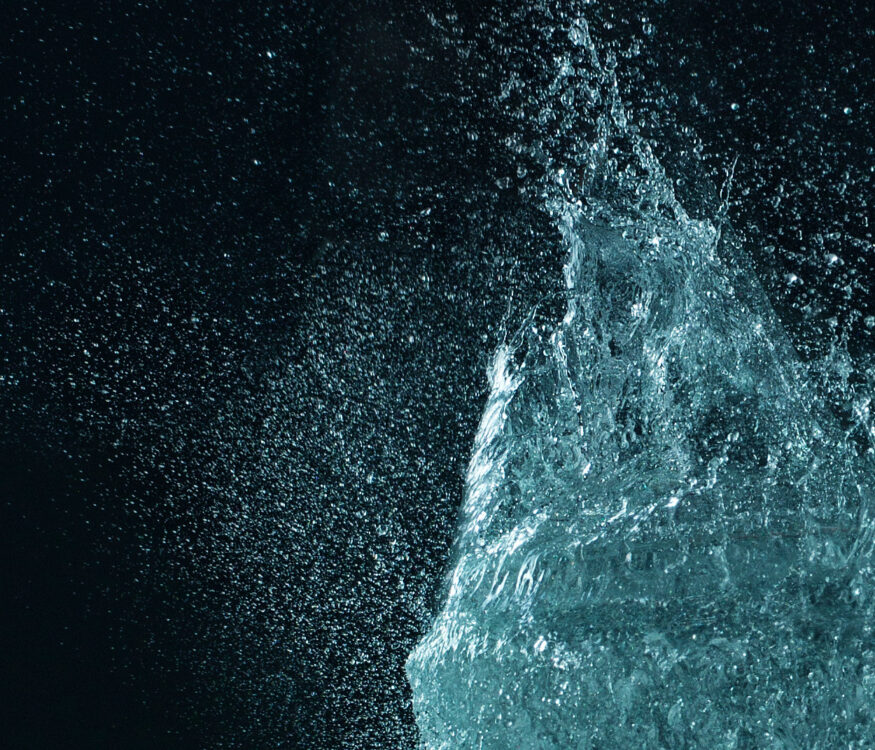
My series is realised with balloons, i.e. a simple balloon is filled water and powder. Thanks to the law of inertia, when this balloon is exploded, the content remains, to a “certain extent”, in its original form – the timing is crucial, however.
Right, let’s start at the beginning. We filled a balloon with powder and, at the moment of bursting this balloon, the flash has to be triggered. Have you ever tried to do this at exactly the right moment? If you can manage this, then you are either incredibly gifted or you were, quite simply, really lucky!
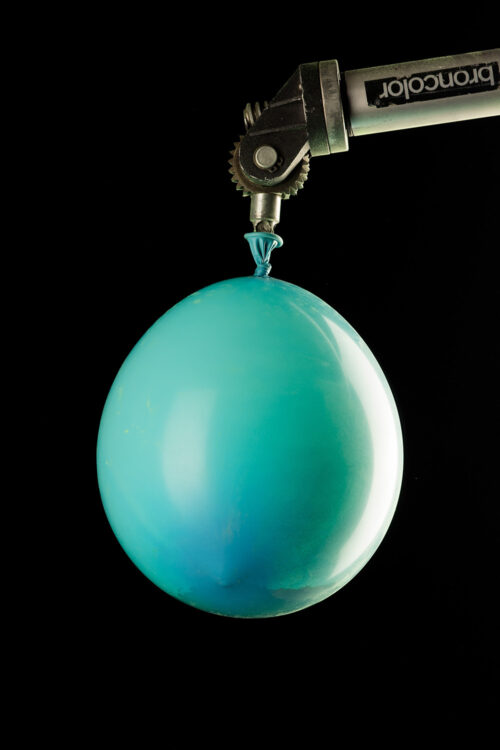
So that you don’t all have to rely too much on luck, there is another way of triggering the flash. Many photographers use a light barrier to capture a falling object at exactly the right point, for example. However, with a balloon, it makes sense to use a sound trigger. Thus, in effect, the flash is triggered together with the explosion. Exactly what we want. Or nearly, in any case. You see, when the flash is triggered together with the explosion, the balloon is still in the picture and a maximum of one hole can be seen in it – this is why the triggering of the flash must be a little delayed. A delay can be programmed with the Scoro. With the Move, I had to programme the delay of the sound trigger. I found that 0.02s worked very well. One can find just the right moment!
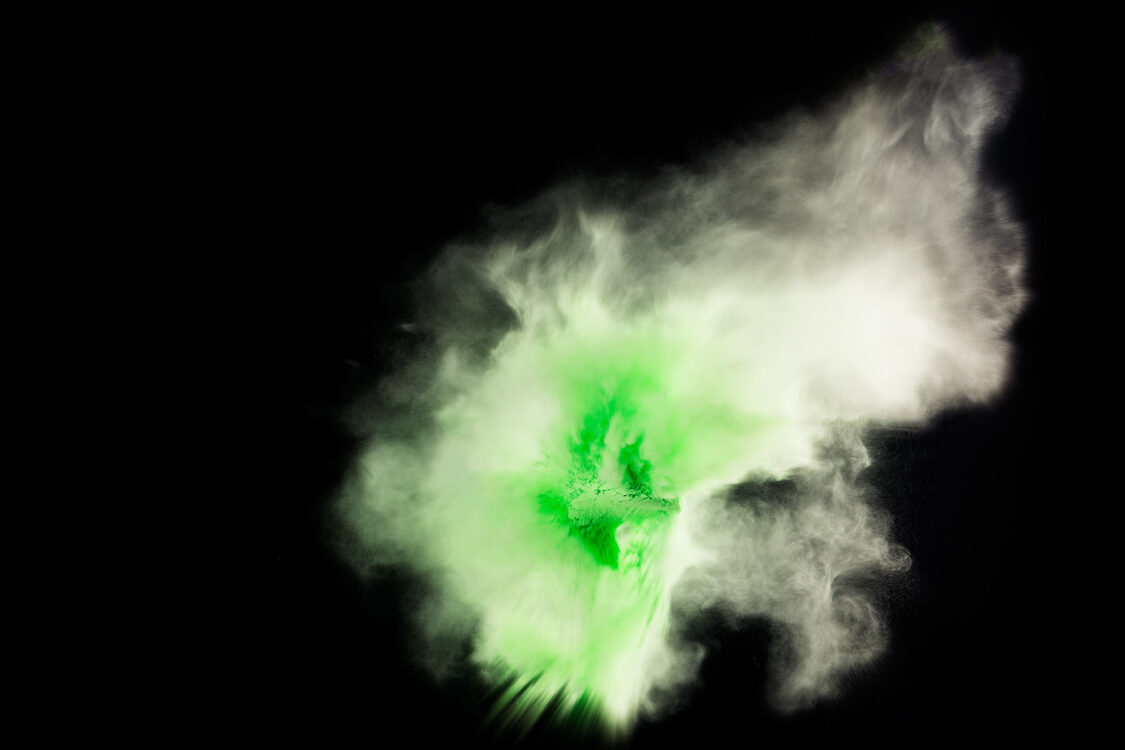
The lighting itself was relatively simple. You can see it well with this balloon. I wanted to slightly emphasise the round shape with the light in order to give it depth, and this is why I set an edge from behind with a softbox. From the front, I had a second softbox as a skin light. As the powder reacts to UV, I also used the UV attachment from the front to enhance the colours. The powder was actually normal, green powder, which is used in the Holi Festivals.
– Move 1200 L
– MobiLED
– Softbox 30 x 120 cm
– UV attachment
– Camera + Zoom Lens
As you can see, I now have the image of blue and green. Red is therefore still missing. That’s why I’m still looking for a great idea as to what could be even more interesting to explode in a balloon. Comments will therefore be warmly welcomed as a comment on this post. The idea, which I will implement at the end, will be rewarded with a great broncolor coffee mug. In addition, the winner will be announced in my next blog post. I am really very curious to hear your ideas and suggestions.
The comments feature is available for suggestions and questions or you are, of course, welcome to contact me directly via fabio@gloorious.com. I am happy to help. Have a good day and until next time!
Yours, Fabio.



